A journey through sustainability is unfolding within the stairwell of Hactl’s North Office Block — where seashores are strewn with plastic toys and shells, and the ocean teems with vibrant life and corals, all protected by a divine guardian. Beneath a tree, a great fruit glistens like a crystal ball, while a whale and other sea creatures converse in gentle whispers, and mermaids and jellyfish glide gracefully through the waters. These are the three artworks featured on Hactl’s newly redecorated “SDG Staircase”. The murals are based on two of the United Nations’ Sustainable Development Goals (SDGs): “Climate Action” (SDG 13) and “Life Below Water” (SDG 14). Created by three talented artists Eason Page, Bao Ho, and Aka C, these scenes convey thought-provoking perspectives and insights on climate change and marine conservation.
From Plastic Contamination to Ocean Protection
“Between the Waves”, created by Eason, illustrates the profound connection between humanity and the ocean. Plastic waste, delicate shells and grains of sand are artistically combined to create an image that invites viewers to pause and reflect on the important role they themselves play in the ecosystem.
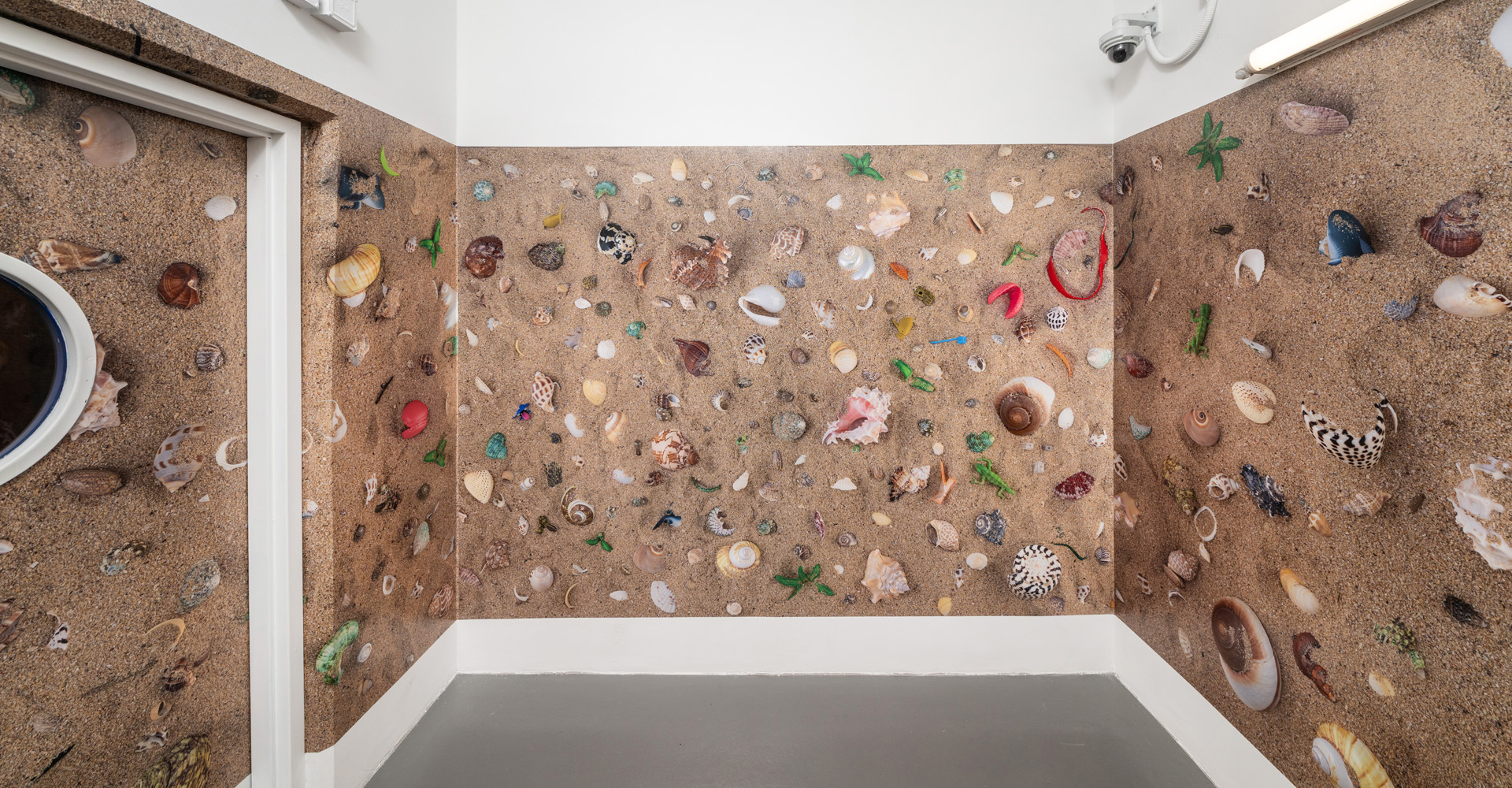
Eason’s inspiration came from what he observed on the beach, where nature and human activity blend — a place filled with interactions, but also conflicts. Eason skillfully juxtaposes seemingly unrelated objects into his photo, crafting a captivating scene that is both preposterous and real. He explains: “By intertwining shells from the shore with modern, humanised Pokémon toys, my work creates a dialogue that connects nature and our daily lives.”
Eason emphasises that plastic is not just part of everyday life, but also a symbol of the profound impact of human activities on the marine ecosystem. He seeks to raise awareness among the audience, reminding each of us about the important role we play in this intricate ecosystem — whether as protector or destroyer of the environment.
Hactl’s office stairway is a transitional space, and Eason finds it imbued with special meanings. He continues: “This is a transient area where people pass through in an instant; they don't usually stay here for a long time.” Eason aims to evoke a sense of familiarity through his work, inviting viewers to recall their own memories and contemplate their relationship with the ocean. “If the audience stops and thinks about their interactions with the ocean, or reflects on the problem of plastic pollution, that would mean my work has made the impact that I wanted.” he adds.
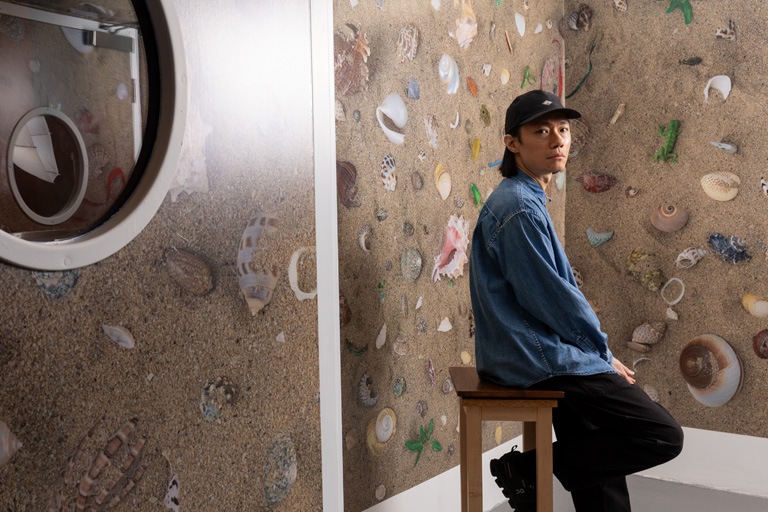
By intertwining shells from the shore with modern, humanised Pokémon toys, my work creates a dialogue that connects nature and our daily lives.
- Eason Page
The Peculiar Sea World
With vibrant colours and fluid brushwork, Bao has beautifully recreated an undersea world. Inspired by Japanese comics, "Whispers of the Sea" portrays a guardian surrounded by a myriad of marine creatures. As viewers ascend the staircase, they find themselves immersed in Bao’s artwork, as if stepping into the ocean.
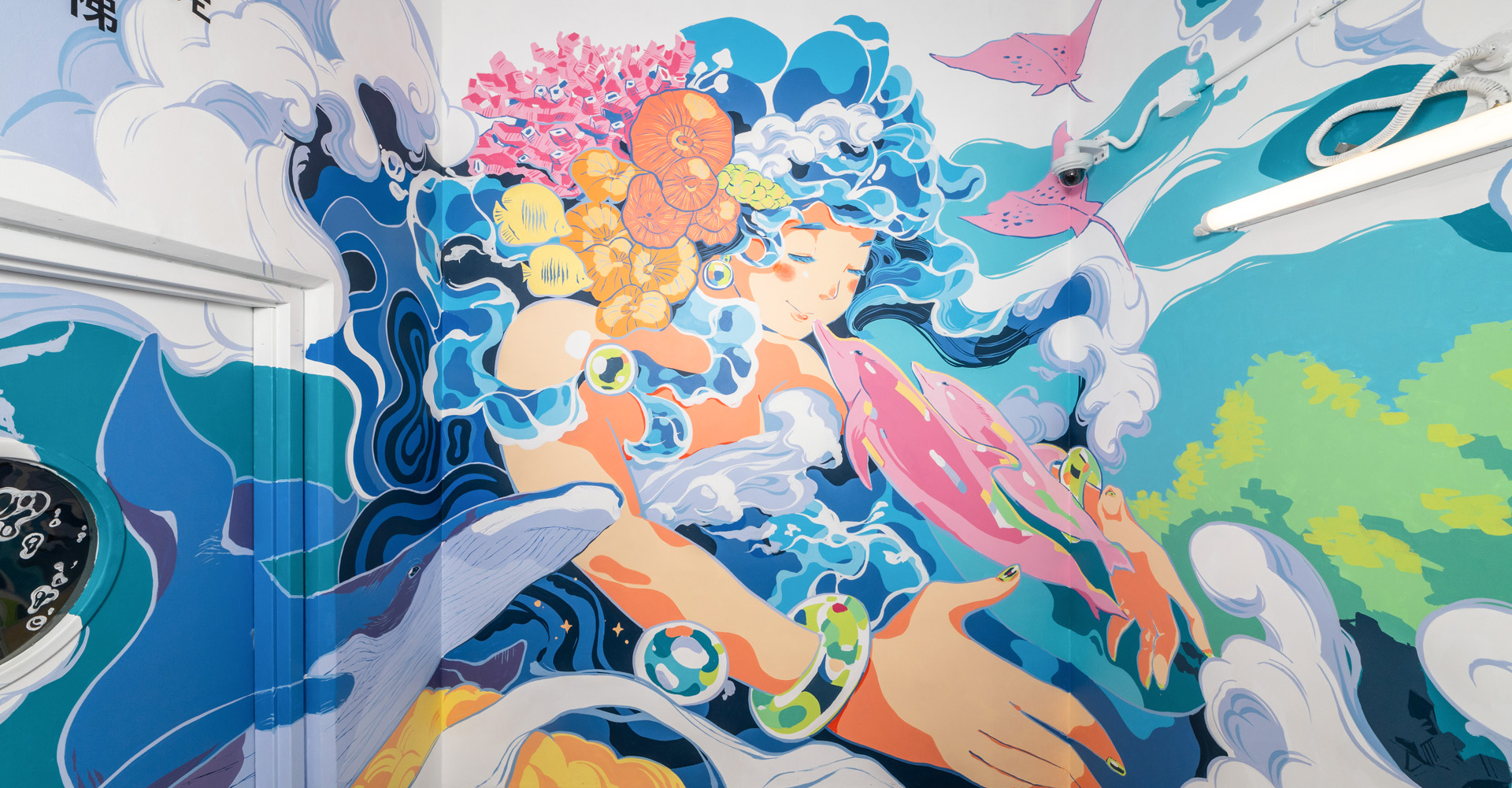
“The goddess in the mural serves as the guardian of the ocean, protecting a diverse array of species — dolphins, whales, different kinds of fish, jellyfish, and coral,” says Bao. “I hope that Hactl’s staff will pause and immerse themselves in this undersea world every time they use the stairway.”
Bao’s inspiration for her design came from her snorkeling experiences in Australia’s Great Barrier Reef. She expected to see colourful corals, but was disappointed to find that they were bleached — the vibrant underwater world had turned into a scene of blandness. “Can you imagine how stunning it would have been to see their original beauty before this bleaching?” she asks.
Bao believes art has the power to tell the most inspiring story in the simplest manner. “Everyone has their own way of expressing and responding to the need for environmental protection. Even the smallest change can lead to a significant impact if we are committed to safeguarding our planet.” She hopes her work will inspire others to become champions in protecting nature.
Even the smallest change can lead to a significant impact if we are committed to safeguarding our planet.
- Bao Ho
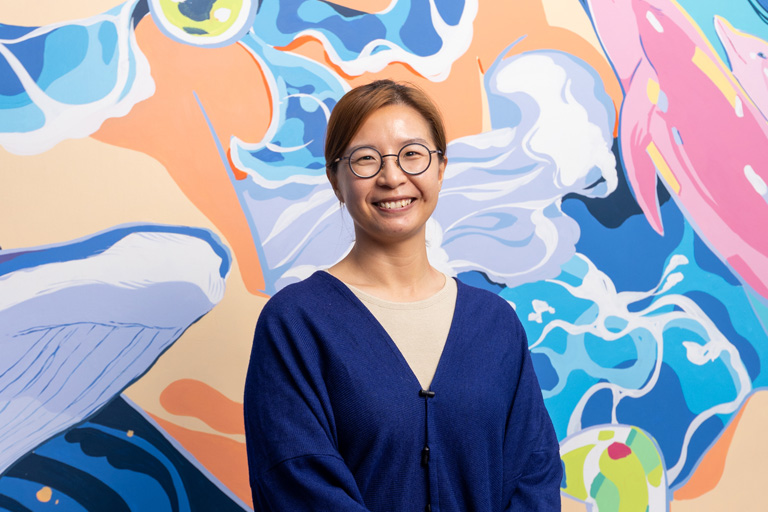
Co-existence of Humankind and the Ocean
Aka’s “Symphony of Time and Tides” portrays an environment tapestry woven by nature and human beings.
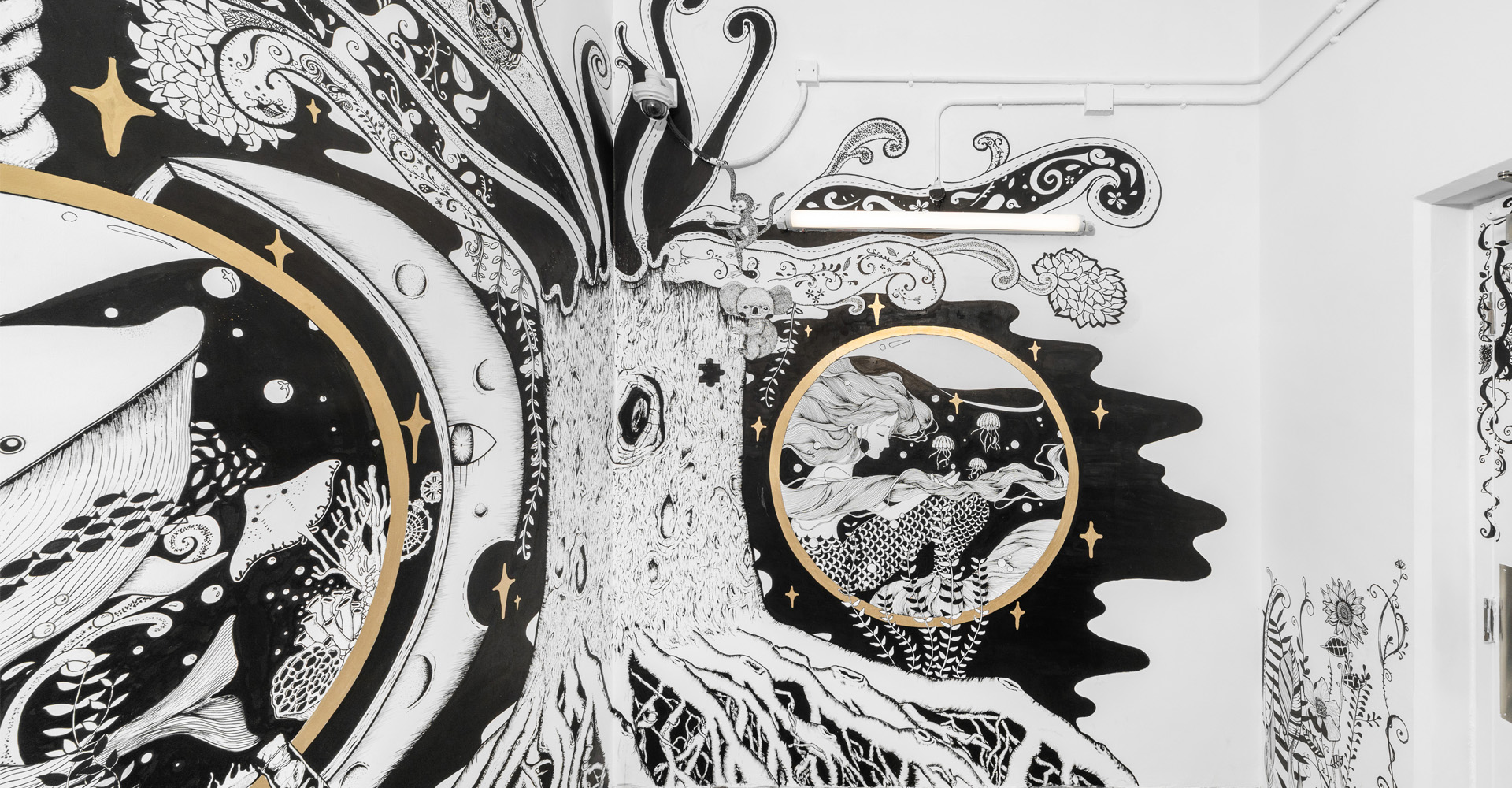
“On the left side of the mural, an enormous fruit rests beneath a tree, cradling a murmuring whale and vibrant marine life,” explains Aka. When these majestic creatures meet their ends, their bodies sink to the seafloor, carrying up to 33 tonnes of carbon dioxide. In the bottom right of the crystal ball, a pipe quietly drains the plastic waste — bags, cutlery, and straws — that plagues our oceans.
As viewers turn to the right side of the mural, they find another crystallised fruit, adorned with elegant mermaids and jellyfish. “Humans often view themselves as superior, while perceiving other species as inferior,” Aka reflects. “By merging human and marine life, I aim to convey that all beings are equal and invaluable.”
Aka believes that art conveys messages creatively, inspiring viewers to reflect on their relationships with nature. “Art connects, encouraging people to understand their responsibilities, and be respectful to society and the environment.” she adds.
“By merging human and marine life, I aim to convey that all beings are equal and invaluable.
- Aka C”

Awareness of SDG
The SDG Staircase art project not only highlights the creativity and passion of the young artists but also demonstrates Hactl’s own commitment to corporate social responsibility. Project curator, and co-founder and Managing Director of One Bite Design Studio, Alan Cheung, explains: “We hope that the artwork will inspire everyone who passes it to reflect on how they live out sustainability. Together, we can all contribute to a more sustainable future.”
To encourage participation among colleagues, Hactl organised a creative photography competition; Management Trainee Curtis Wong and his team were its winners. Posing in front of the “Between the Waves” mural, dressed in beachwear and carrying a beach volleyball, they look as if they are chilling at the beach.
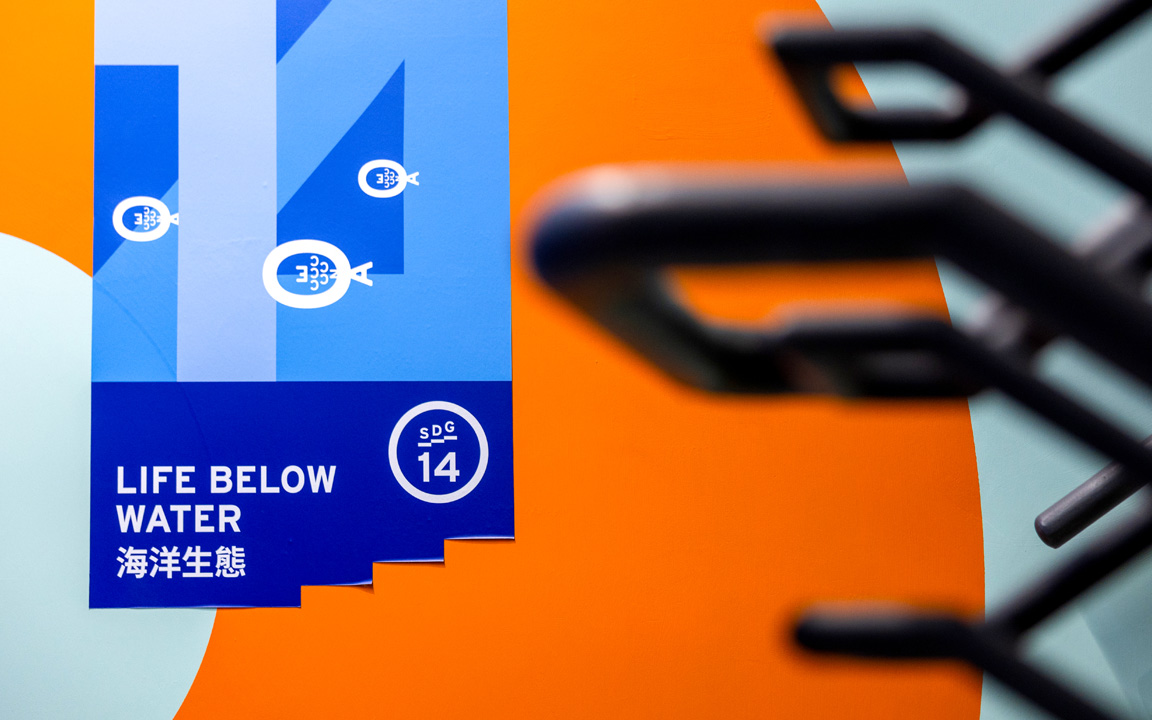
Curtis reflects on how Eason’s work sparked his thoughts about human behaviour. “We often visit the beach to enjoy the sun and swimming; yet we often leave behind different kinds of garbage.”
Participating in this competition has deepened Curtis’s understanding of the SDGs, he adds: “For instance, the two Chinese white dolphins depicted in ‘Whispers of the Sea’ were once common in Hong Kong waters, but are now an endangered species. We must tackle these environmental issues.” He concludes: “Every time we go up or down the stairs, we have an opportunity to pause and reflect on whether we are doing our best to protect the environment.”

